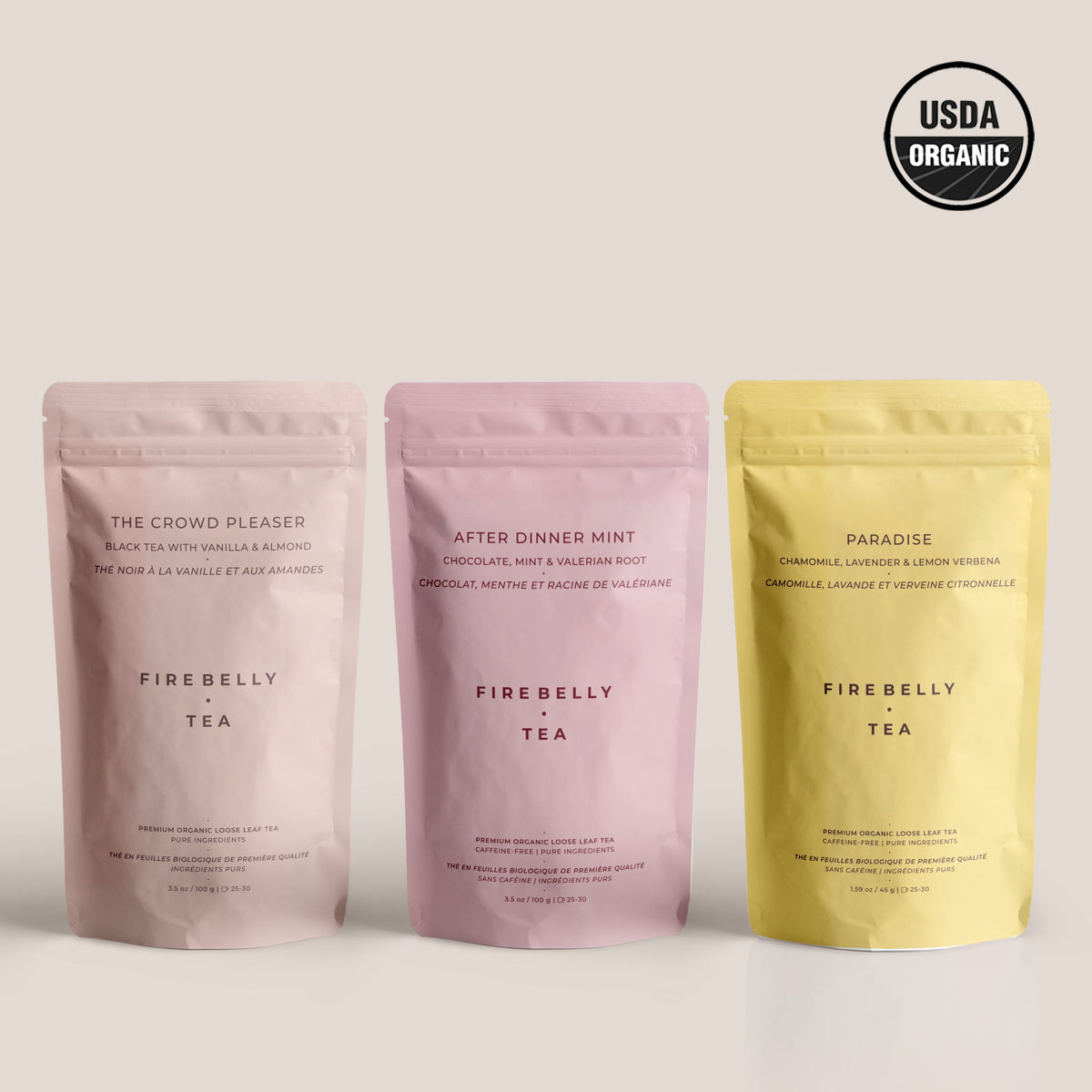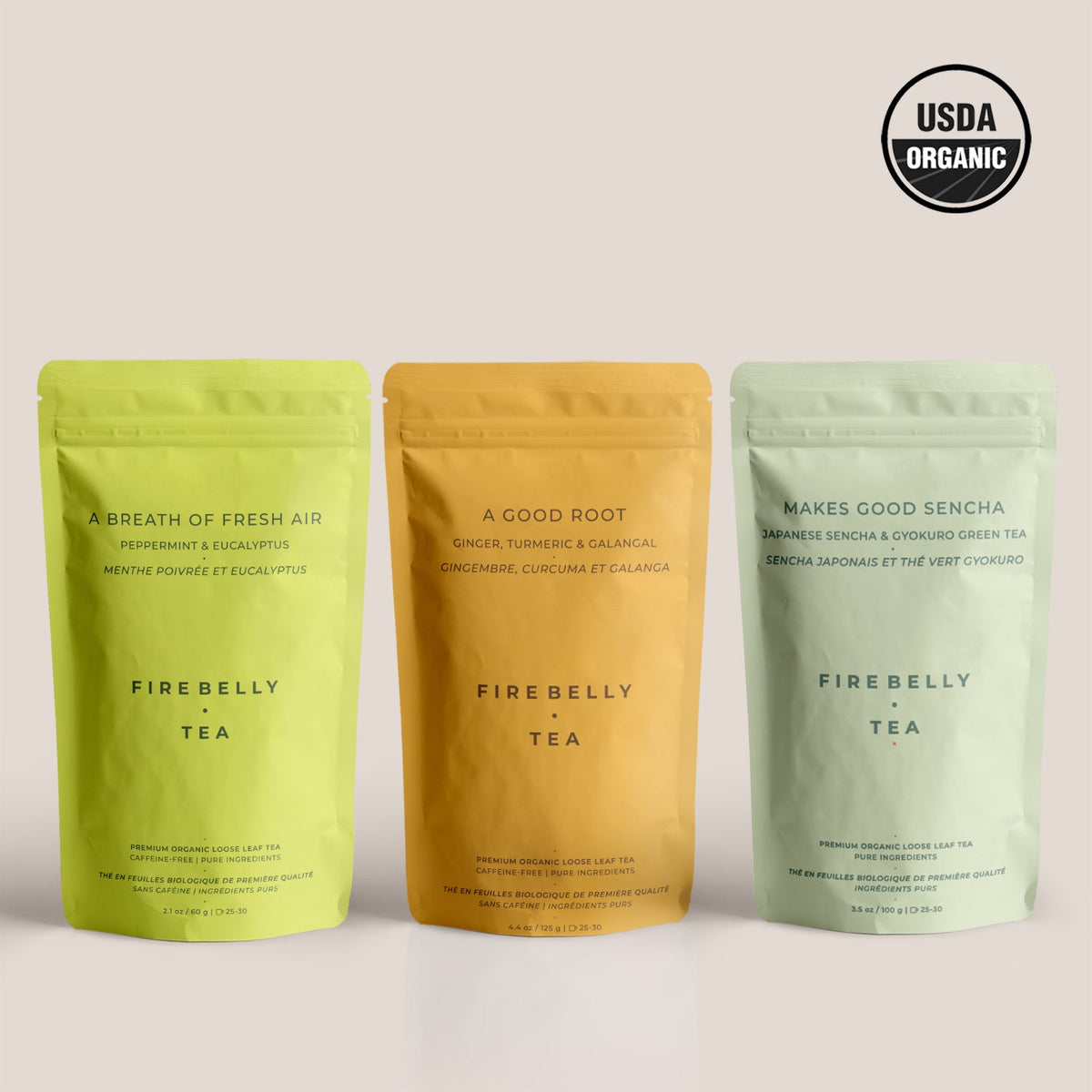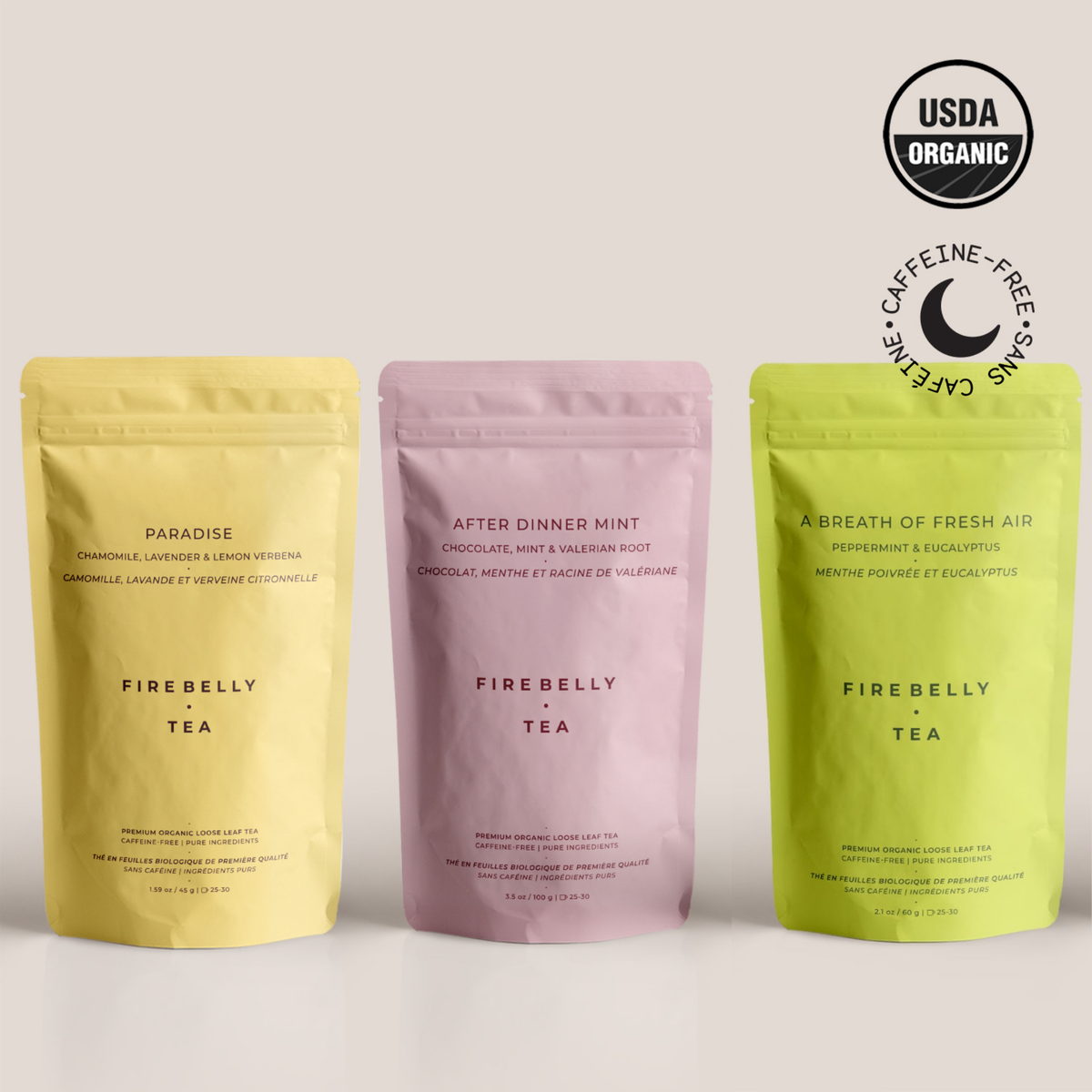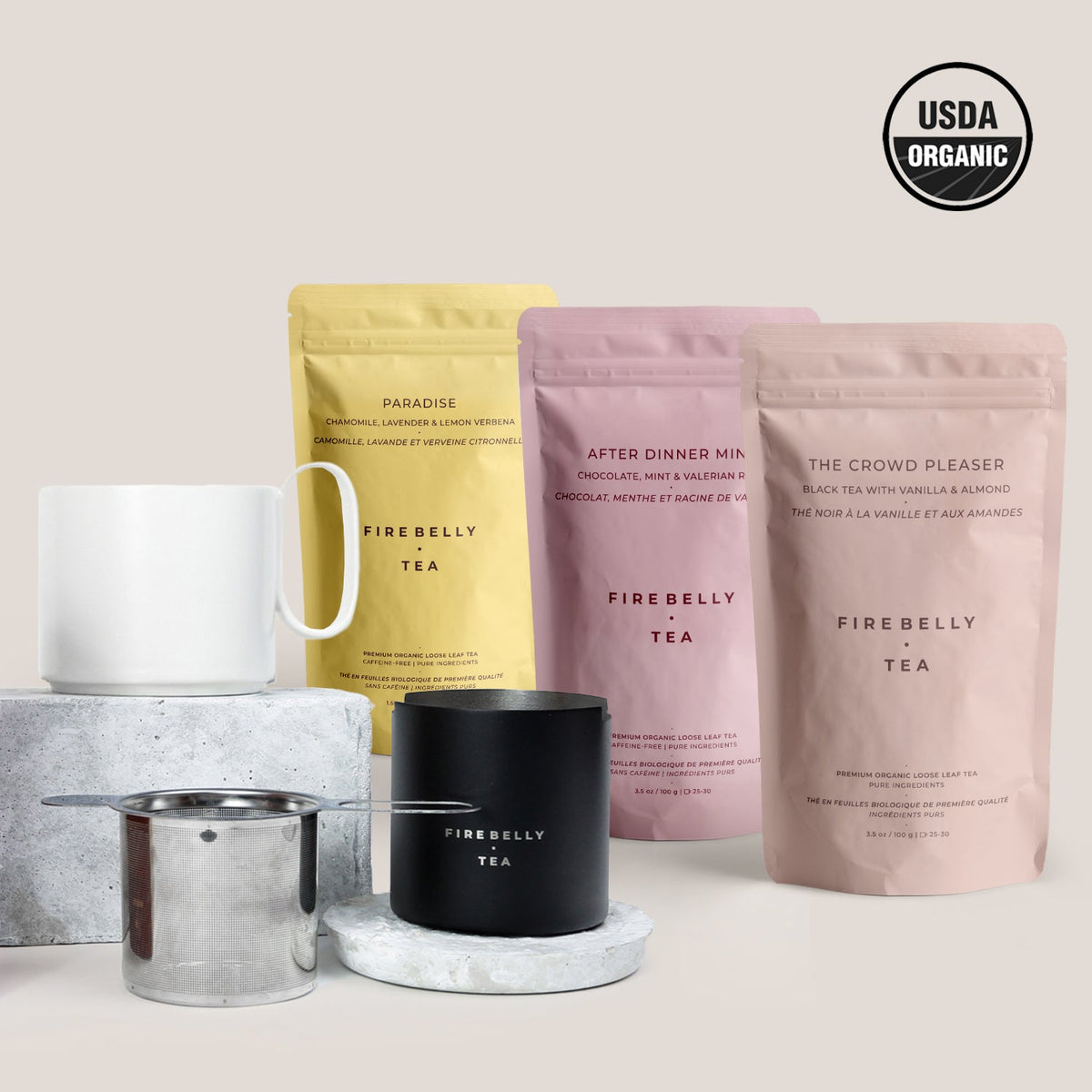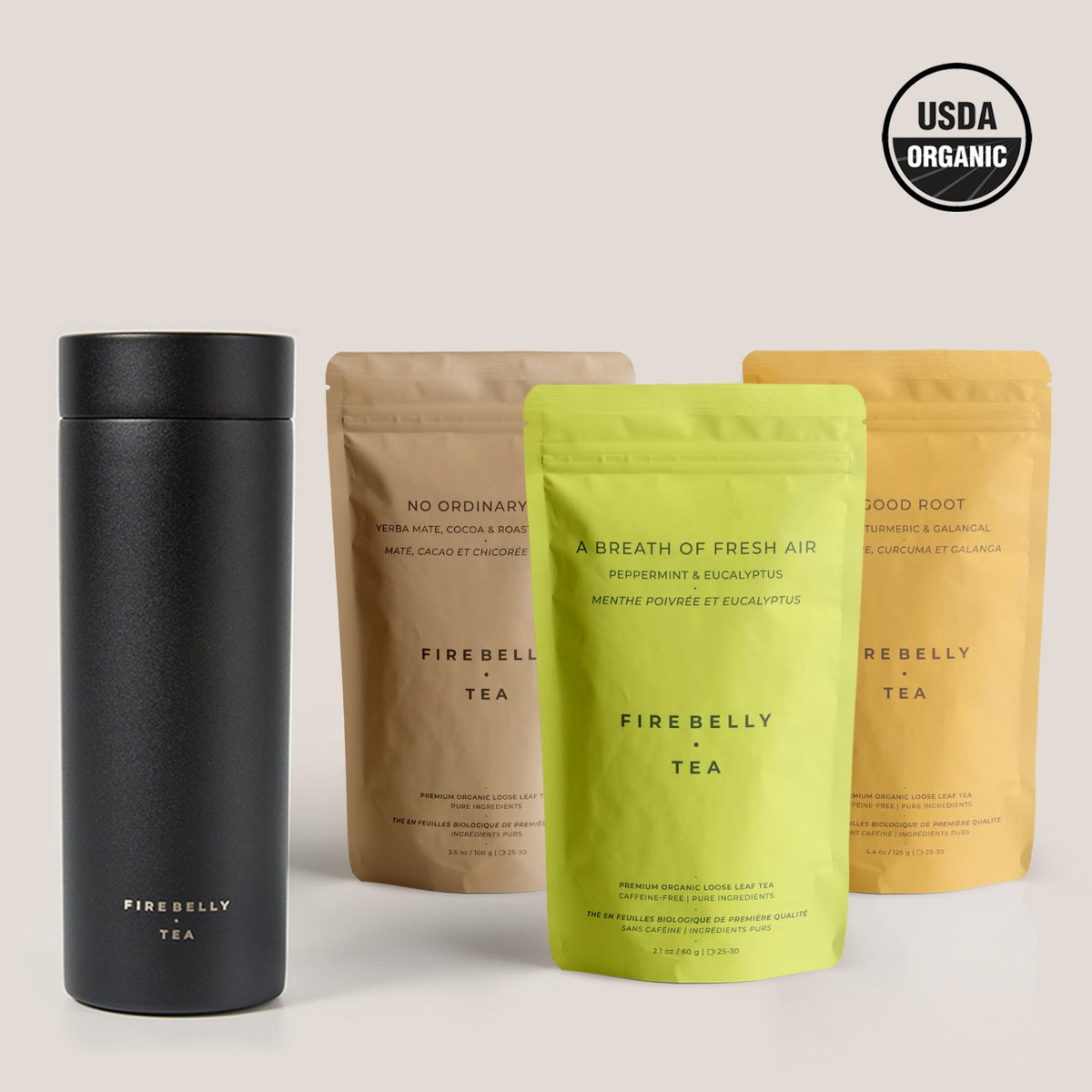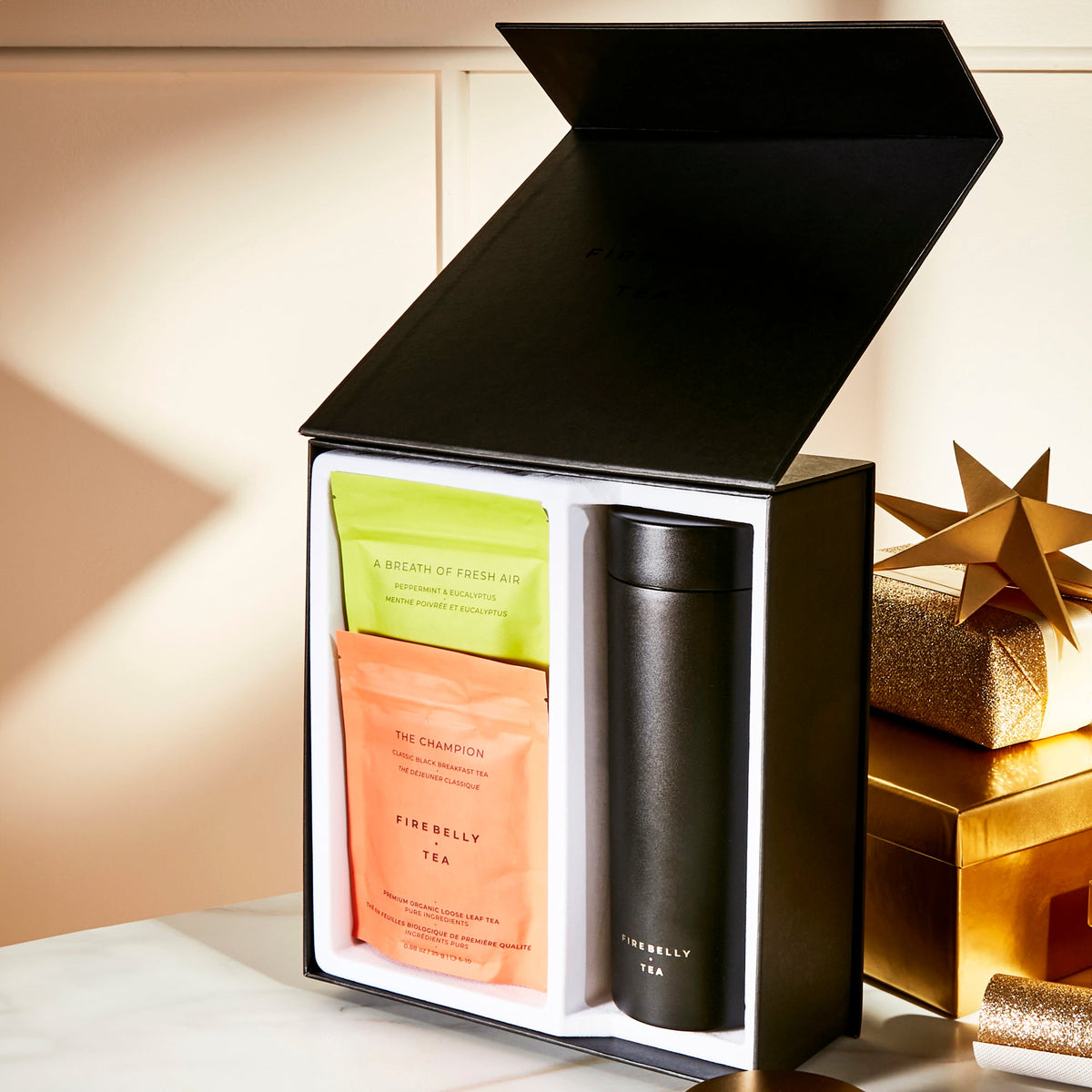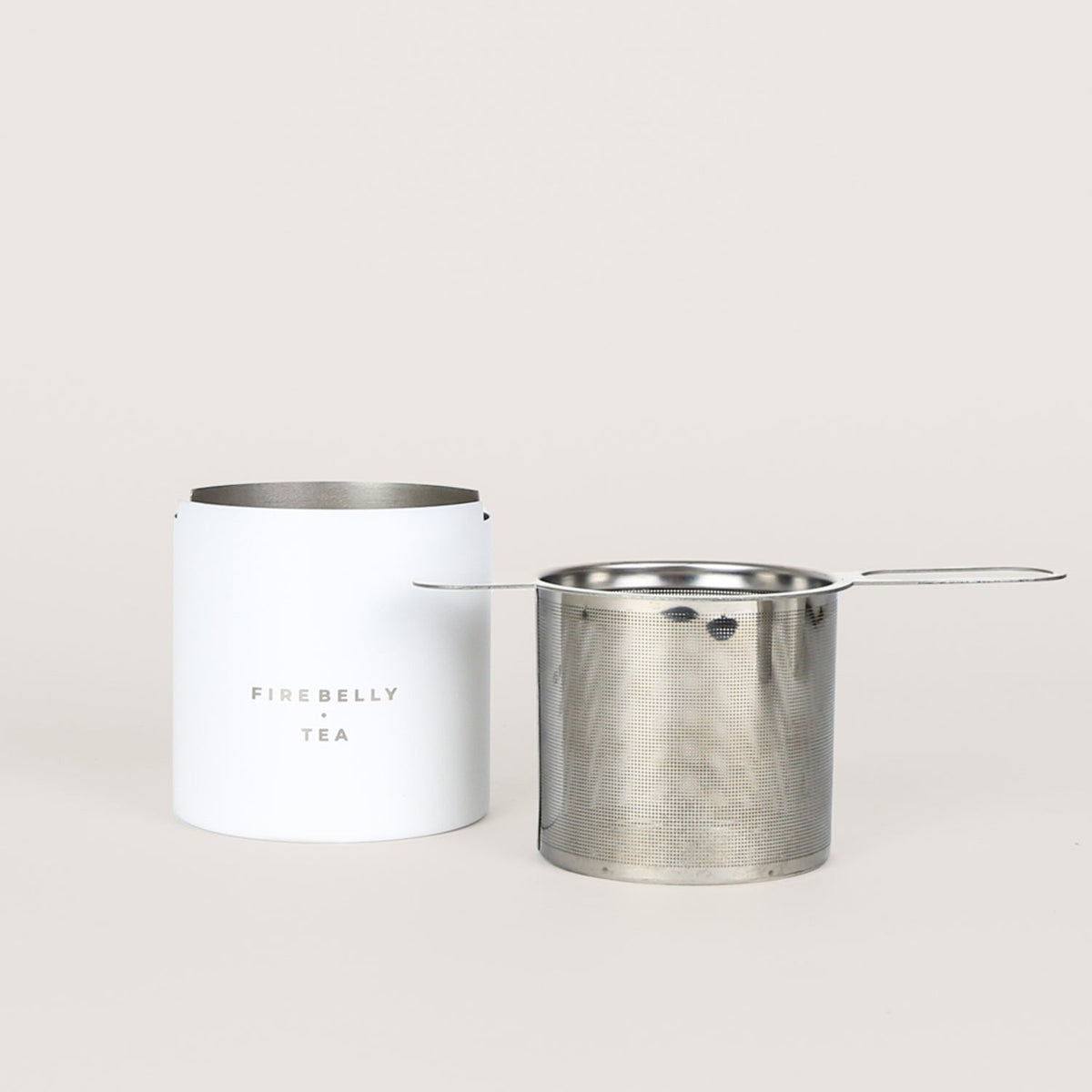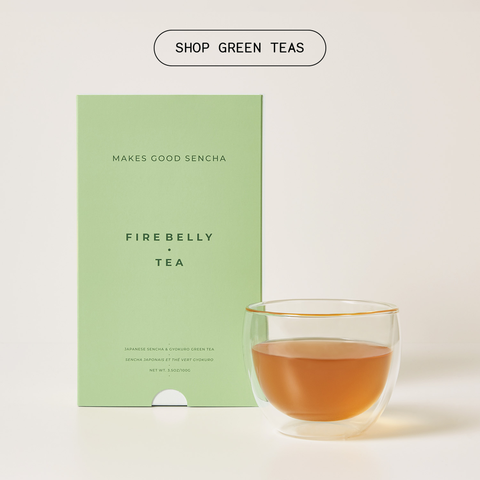As you sip a warm and relaxing cup of green tea or power down an almond milk matcha smoothie after a workout, you may not be aware of its fascinating culture and history. If you were to ask most people, they would tell you that tea is a drink of British origin. But the truth is tea played a significant role in the history of the world, and it is steeped in a rich culture that dates back centuries.
In this article, we will take a step back to tea's origins, its cultural impact throughout the ages, and the historical journey it has taken to get to that mocha matcha latte you're enjoying today.
The History of Tea Around The World
Tea Origins in China
According to ancient Chinese tea lore, tea dates back to 2727 BC. Legends say that Emperor Shen Nong was busy purifying water by boiling it in a pot under the shelter of a tea tree when a gust of wind blew several leaves into his pot.
He drank his water and loved the flavor, the color, and the aroma so much that he decided to share it. Soon the whole of China was enjoying this delicious drink, and before long, it became a household staple.
History states that Chinese tea was first used for medicinal purposes in 2000 BC. It was also seen as a great commodity and was mainly used in gift-giving, ancestor worship, courtship rituals, and paying imperial tribute taxes. It was only consumed as a daily drink much later.
The classic work Ch'a Ching by the 8th-century scholar Lu Yu became the first authoritative book on China tea. The book detailed instructions on growing, manufacturing, and of course, the art of drinking tea. China tea's popularity in Chinese culture grew so much that during the Tang dynasty, it became the national drink of China.
By the 9th Century, the enjoyment of tea eventually spread beyond China to areas of Japan and Korea, and later tea spread to the Middle East. For many centuries, China was the world's only exporter of tea. Around the beginning of the 19th Century, the areas of India and Ceylon also began growing tea, but China was and still remains one of the leading tea suppliers to the rest of the world.
The History of Tea and the Japanese Tea Ceremony
As tea made its way from China to Japan, the Buddhist monks, priests, and the ruling class in Japan drank tea regularly. The daily tea rituals of the temples soon found their place among other aspects of Japanese culture, and elaborate tea customs and ceremonies were founded by the priest Sen Rikyu in the 1500s. Sen Riyku is regarded as the founding father of the Japanese Tea Ceremony and three of its schools.
Matcha tea was the dominant tea used in the Japanese Tea Ceremony. In cultured circles, drinking tea became so socially acceptable that it replaced alcohol. Drinking tea was also valued for having medicinal qualities and healing many ailments. What started as a luxury item, tea, was now a part of everyday life and tea culture in Japan.
Green tea consumption in Japan is unbeatable over any other beverage, and various green teas are sold and served throughout the country. Special attention is given to color, taste, fragrance, and the setting and decoration of special tea rooms to hold the ceremonies. These elaborate tea ceremonies are still a part of Japanese culture today.
Tea Making its Mark in India
The story of the origin of tea from India states that Prince Dharma left China to preach the teachings of Buddhism. During this time, he vowed not to sleep at all during his 9-year mission. However, near the end of the third year, Prince Dharma was overcome with fatigue, so he chewed on tea leaves to help him stay awake. The story states that it worked so well that he stayed awake for six years.
India remains the largest tea exporter in the world, with most of its production going straight to use in the home. Tea is an integral part of the Indian economy and culture. Even though tea plants are indigenous to areas of Northwest India, tea wasn't always the drink of choice for Indians until the British began producing tea there around 1850 under the British East India Company.
Darjeeling, known as "the champagne of teas," is one of the more popular teas grown in the foothills of the Himalayas. The high altitude and microclimate are perfect for slow-growing leaves that bring out Darjeeling's delicate but complex flavor. While over in the Northeast of India, Assam is grown and has a more full-bodied, malty, and bold flavor. And in Southern India, fruity and fragrant teas are grown.
Darjeeling mixed with Assam is popular for making chai tea. Chai is a black tea simmered with sugar, milk, and rich flavorful spices such as ginger, cardamom, clove, and cinnamon. Households and tea houses all over India have their very own special recipe. And more importantly, every homemaker and chaiwallah has his or her own recipe for masala chai or spiced tea.
The Great Tea Road to Russia
Tea made its way to Russia via the "Great Tea Road," which was part of the Silk Road. It may sound like a nice trade route, but anyone taking the journey would be gone for sixteen months covering over 11,000 miles. Caravans would consist of up to 200 to 300 camels to help make this treacherous journey possible.
Imagine Russian tea making its way on camels over such a great distance. No wonder it was initially only available to the very wealthy! At the time of Peter the Great, the price of tea dropped and made its way into all aspects of Russian life.
Russian tea was mainly black tea varieties, often sweetened with fruit, sugar, or jam and always served hot. It is customary for tea to be served from a samovar or combination water heater and teapot. The samovar was created in the 17th Century based on the design of Mongol kettles of the 13th Century. These samovars were used year-round, and homes were adapted with special venting systems so Russians could enjoy hot tea in winter, spring, summer, or fall.
Tea Culture in The Near East
Because of the already-established caravan routes, the global tea culture found its way to all Mongol lands, Muslim countries, and Russia before it even touched European soil. Tea was already established as the most popular drink of households and traditional teahouses across most Arab countries, and much of their tea culture and traditions survive today.
Muslim countries remain among the highest per capita tea consumers in the world. Because of their love of tea, all-day tea-drinking traditions are popular. In Morocco, tea is traditionally served elaborately, with colorful tea glasses, incense, and hand washing in rose water to welcome guests into their homes. The favorite tea drink is typically a hot mint tea made from mint leaves, green tea, and sugar.
Before the 1900s, tea production didn't exist in Iran. The English had a strict monopoly over tea production in India and the rules regarding non-Europeans taking part in the tea trade. In 1895, an Iranian diplomat named Kashef Al Saltaneh changed the rules so Iran could be a part of the tea trade.
Kashef Al Saltaneh, already fluent in French, went to India posing as a French Businessman. He learned tea trading as he smuggled tea saplings and seeds into Iran and became known as the founder of Iranian Tea, opening Iran to the trade and filling homes with the aroma of fresh teas.
One of the more popular teas is Ceylon tea, which gets its name from the island nation of Ceylon, or as its known today Sri Lanka. In the 17th Century, Arab merchants and Yemen pilgrims were the first to bring coffee plants to Sri Lanka via India. Because of the British and the Dutch East India Trading Company, coffee plantations were popping up all over the island.
In 1869, these plantations fell victim to a fungal disease known as leaf rust that nearly destroyed the coffee industry. Because of the dying coffee trade, the tea industry was expanded. Today Sri Lanka is one of the most significant Ceylon tea exports in the world, and many enjoy its full-bodied flavor with jaggery, condensed milk, and white sugar.
Té: The French Tea Connoisseurs
King Louis XIV was one of Frances's first French tea connoisseurs. He initially drank tea daily to aid his health for digestive issues and to help prevent the onset of gout and cardiac problems. Soon after the French Revolution, France seemed to lose interest in the drink until it reappeared in the mid-19th Century.
Today French people enjoy tea for a variety of reasons. There are teas for almost every occasion, event, and even time of the day. You can find thousands of elaborate tearooms in France, especially in rural areas. One of the reasons for the vast popularity of tea being a widely consumed hot beverage across the country is its connection to the fabulous pastries found in cafés and pâtisseries throughout France.
It is no mystery that the French have established themselves by making world-class pastries. Along with their creative and delicious pastries sprang an equally artistic and creative tea culture. Drinking a cup of tea accompanied by a French pastry has become a culinary experience and an art form all on its own - and it gives French tea true character. The history of tea wouldn't be complete without the tea traditions of this rich and creative country.
Tea Time, Anyone? The British Influence on Tea
Next to China, The United Kingdom and the Republic of Ireland consume the most tea per capita globally. Tea found its way to the western world in the 17th Century via the Dutch East India Company when coffee and hot chocolate were the preferred beverage of the elite.
It wasn't long before tea drinking overcame the popularity of coffee and hot chocolate and became a staple of British life. In upper-class circles, serving a "low" or "afternoon" tea is a tradition around 3:00 to 4:00 pm. Tea traditions like afternoon tea originated from 19th-century English aristocracy eating two meals daily - a late breakfast and a late dinner. While middle and lower-class circles would have a "high" tea and drink tea later in the day to accompany their late dinner at 5:00 or 6:00 pm.
The Brits named their tea traditions based on the height of the tables the meals were served on. For example, "high tea" was served on high working tables, and "low tea" was served on lower tables, which we now know as "coffee tables."
The main tea types that filled British cups were Earl Grey and English Breakfast. These teas and others are still widely consumed throughout the U.K. and the Republic of Ireland. And the very specific tea times like "high tea" and "afternoon tea" are still observed by every walk of life.
Tea as a Revolutionary Act
Tea history is not immune to turmoil. In many parts of the world, tea houses were a place for men, intellectuals, and revolutionaries to discuss social and political ideologies, plan revolutions, and drink tea. Let's look at how drinking tea may have helped shape nations and turn the tides of human history.
Chinese Culture and the Tea House
In 1911, a nationwide strike saw the end of the Qing Dynasty, sparked from inside a Heming teahouse in Chengdu. At the time, the Sichuanese rioted against the government's involvement with an English railroad company.
When this Cultural Revolution began, the Chengdu authorities first shut down all tea houses. The reason? They claimed that these establishments housed heretics and witches with their ample supply of tea, understandably, since the teahouses in Chengdu were "safe zones" for people to talk about everything from society, culture, and Mao.
Tea History in Iran
In places like Iran, there is a tea house in almost every neighborhood where locals discuss everything from politics to business. Many local merchants could do business deals there with other merchants and customers.
Tea houses in Iran had a life of their own. It was where generosity, charity, and helping people in need were prioritized. Many of these tea houses in Iran are still male-dominated and carry out many of Iran's traditional architecture, music, painting, art, and smoking hookah, with tea being the only beverage consumed.
Historically tea houses in Iran played a huge role in determining political and social movements and revolutions. The business and intellectual classes frequented these tea houses and discussed some of the critical issues that shaped Iranian life.
The Boston Tea Party: Tea Founding the United States
In the U.S., tea helped found the nation's independence. At the famous and celebrated Boston Tea Party, three shiploads of tea were dumped into the harbor at Griffin's Wharf in Boston, Massachusetts, on December 16, 1773. This act was to protest the high taxes on tea that was re-exported from Britain to the American colonies.
It was reported that the American colonists dumped 342 chests of tea imported by the British East India Company into the Boston harbor. This, and other acts of protests, set into play the First Continental Congress between September and October of 1774 and became one of the markers for the start of the American Revolution.
The Birth of Iced Tea
Another way the U.S. revolutionized tea was by popularizing iced tea. This worldwide phenomenon was first introduced at the 1904 World's Fair in St. Louis when tea producers from India promoted their black teas. Due to the intense heat at the fair, they decided to serve the beverage over ice, hoping that fairgoers would try it to help cool themselves down. From those early beginnings, iced tea has grown to a 40 billion cup per year industry in the U.S.
In recent years the demand for tea in North America has continued to rise. Specialty premium teas, loose-leaf, and matcha are slowly becoming household names for making quality tea drinks. Teas, especially matcha, are now found in all types of food products and beverages.
Want a tea-infused sports drink? Care for a matcha latte? How about matcha face cream? As the demand for tea increases, more unique products, accessories, innovative tea drinks, and tasty tea blends like these will satisfy all tea lovers and recruit a few new ones.
Tea Cultivation and Manufacturing
All true teas, such as black, green, Oolong, matcha, and white tea, are harvested from the same Camellia Sinensis plant. How each tea is processed determines what type of tea it will be. Let's look at how these teas get their names and what is needed to grow tea in all its available styles.
Black Tea and Blends
In North America and Europe, mostly black tea and black tea blends like English Breakfast and Earl Grey are the top choice for a hot cup of tea. The tea leaves and the steeped tea are darker than other types of tea.
The dark color is due to the amount of processing the leaves go through. First, the leaves are spread out on racks to dry, then rolled, oxidized, and finally dried. The amount of processing at the rolling stage will determine if the tea will remain in larger pieces for a loose-leaf tea or end up pulverized into a powdered tea and placed in tea bags.
Blends use this versatile tea as a base but may add other teas or flavors. For example, Earl Grey uses black teas like Ceylon, Indian or African, and bergamot oil to achieve the tea's unique taste. You can find many of these blends in tea shops worldwide.
Green Tea and Matcha
The original Chinese tea in China was green tea. Tea growing for this tea is similar to other types of tea, except that wide varieties of green tea, like matcha, are grown in the shade so that the quality tea leaves retain a bright green color loaded with most of the rich nutrients.
There is also less processing used to make green tea. The leaves are dried and oxidized much less than in black tea varieties. The one exception to green tea processing is matcha, which is further pulverized down into a fine powder. Matcha is an essential part of Japanese society and their tea-drinking customs. Read more about matcha tea and how to make it here.
Oolong Tea and White Tea
Tea plants also produce Oolong and white tea. Oolong is in a category all on its own and sits somewhere between black and green tea varieties. The tea is partially oxidized and is slightly fermented.
White tea is made from the Camellia Sinensis plant's fresh young leaves and buds. This delicate tea is only harvested in tea plantations in the northern district of Fujian, China, during the spring. The white fuzz that coats the leaves and buds gives the tea its special name.
Tea Drinking in the 21st Century
A long and diverse tea history and tea traditions are worth reflecting upon when you spend time sipping tea at home in a comfy chair or at your office desk. From the ancient caravan journeys to the political and social protests to the science and research today concerning tea's tremendous health benefits, tea truly is more than just a drink to make us feel warm inside and tantalize our senses.
With ongoing health research, tea's antioxidant properties are studied for everything from losing weight to improved cardiovascular health to cancer prevention. And tea's popularity has made tea the star attraction in several stylish products, from smoothies to energy drinks, cosmetics, and skincare products.
Tea came from humble beginnings, was the focus of wealth and power, and saw dynasties fall and new and innovative products emerge, but tea's story is far from over. With a rich and vibrant history, tea will indeed have an even more exciting future. So boil some water, grab some fresh tea leaves, and pour yourself a cup of historically famous but beautifully delicious tea!
If you're looking for some truly great tea blends, try some of these!
